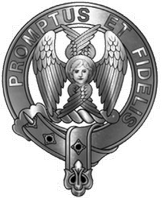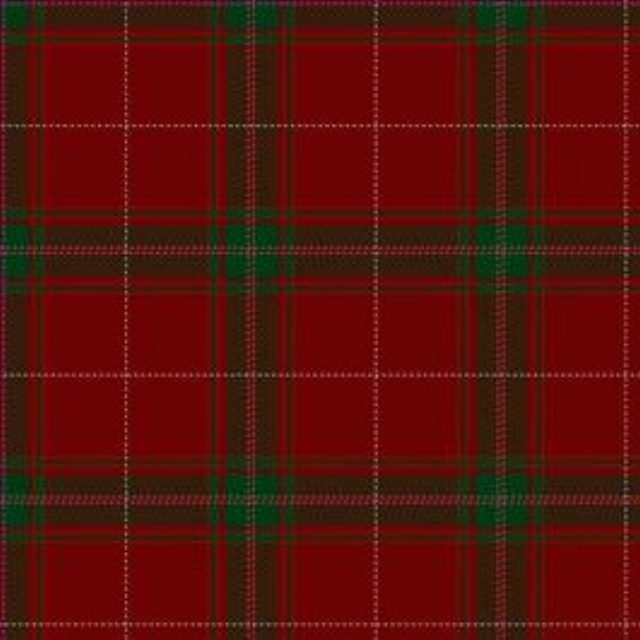CREST: a Seriphim Volent
MOTTO: Promtus et Fidelis: Ready and faithful
SEPTS:
Modern Accepted Variants of the name Carruthers (although not complete): Caruthers, Carrothers, Carrithers, Carothers, Carrodus, Carruthers, Carrutherys, Carradice, Cardus, Crothers, Cruddace, Crowdace, Cridders, Credeur.
Carruthers was first found in what is now Dumfriesshire, where they were seated from very ancient times in and around the parish Middlebie. Historically, the principal strongholds of the Clan were Mouswald, Holmains, Dormont, Little Dalton and Rammerscales. Carruthers as a Clan, lived and rieved in the most dangerous and violent part of the Scottish borders, that of the West March. The most accepted origin of the surname of Carruthers, according to wikipedia, suggests it arose in Dumfrieshire and it appears to alluding to the ancient Briton fort called Caer Rydderch or Rythyr. This hypothesis was promalgated by the historian George Fraser Black who asserted that this means fort of Rydderch, with Ryderch appearing to be a form of personal name. The Carruthers of Dormont further suggest through family legend, that the Carruthers family may be descendants of ColeHen, King of Cumbria
(or Old King Cole as he became known) because one of his sons,Rhideris, built a caer, or castle, near Ecclefechan. The consensus is that the family existed in the area well before the Norman conquest and although the surname was only first recorded in the late 13th Century, the area from which we hail was well known as Carruthers. There is however a train of thought that we were originally Norman knights (hence the fleur-de-lis on the coat if arms and affiliation with the family de Brus [Bruce] ), which would correlate with the usage of 'de' meaning 'of' or 'from' as a prefix of early members of the Carruthers family. The suggestion is that they came over during the conquest with the arrival of Duke William of Hastings in September 1066, and integrated into local families of rank in the borders of Scotland. There are however no Norman knights listed, who accompanied William or otherwise on any 'Norman' names list reserched, with a name that would suggest being a precursor to our own and no evidence to support this theory. it seems according to historians, that surnames only really came into play in and around the 13th century when people started paying a personal tax. This tax, the earliest known being in 1275, was taken from non-churchmen being called a lay subsidy and was paid on all movable property to help fund the army in times of war. It was around this period that people began being recognised by what they did for a living, or where they came from. The earliest recording of the name or territorial designation 'Carruthers' was William de Karrutherswho made a donation to the Abbey of Newbattle in the reign of Alexander II of Scotland (1215-1245). Another early recorded spelling of the family name 'Carruthers' is shown to be that of Simon de Karruthers, a churchman of the parish of Middlebie, which is dated circa 1272 - 1307. This is listed in "Historical Manuscripts of Great Britain" and was during the reign of King Edward 1, also known as "The Hammer of the Scots. Nigel de Carruthers, a cleric who was also Rector of Ruthwell in 1380, and rose to become Canon of Glasgow Cathedral. In 1351 he was also named as chancellor to Robert, High Steward of Scotland in 1344. Robert was later to become King Robert II in 1371 (proginator of the Stuart Royal Line), under David II, last in the male line of the House of Bruce. It is also suggested although no solid evidence exists, that the Carruthers were among those who rose with William Wallace (1272-1305) when he rebelled against English rule and again with Robert the Bruce, supporting him at Bannockburn in 1314 when he defeated the English and finally drove them from Scotland. However, when the Barons of Scotland were summoned by King Edward the first of England to Scone in 1291 to swear fealty to the Crown of England and sign the famous Ragman Roll, there were some that refused, one being William Karrudise(Carruthers) of Annandale who stood with Sir William Wallace of Ellerslie (William Wallace) and Sir William Douglas of the Sanquhair, in their refusal to bend the knee. It seems we were a proud and rebellious lot as it is stated in the Chroncles of Muckledale that a William Carruthers was one individual who ever refused the English Yoke. He was a friend of Thomas Bruce, Earl of Carrick, and a supporter of Robert Stewert (King Robert II, 2 March 1316 – 19 April 1390) grandson of Robert the Bruce, who reigned Scotland 1371-1390. Robert II was the first monarch of the House of Stewart. What is historically evident from the mention in the chroncles is that Carruthers were a highly respected family in their region.
For a printable pdf with more information, click
HERE

